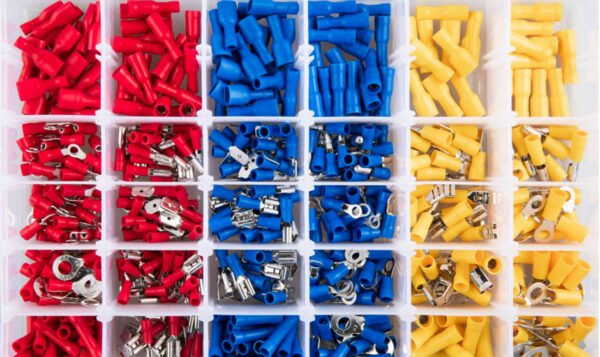Is a One-Piece Toilet Better? Pros and Cons

When it comes to home improvement, the humble toilet rarely gets much attention. However, one-piece toilets are quietly changing bathrooms everywhere. Is it just a stylish addition, or is it a real game-changer for your everyday comfort? Are one-piece toilets any good? I have to say it depends on personal habits. But we’ll break down its pros and cons for you.
What is a One-Piece Toilet
“One piece toilet” is a term that may still be slightly unfamiliar to many people. It’s a design that cleverly merges the tank and bowl, and is known for its cleaner look and fewer seams, greatly reducing the burden of cleaning and maintenance. But don’t think it’s a simple design change. In fact, behind the one-piece toilet is a collection of technological innovations: from energy-efficient water volume control to intelligent cleaning systems to ergonomically-considered comfort designs, each advancement pushes the boundaries of the field.
As we delve deeper, you’ll learn about the strengths and limitations of the one-piece toilet, how it performs in the marketplace, and how it compares to other types of toilets.
Pros and Cons of One-Piece Toilets
Pros
- Clean design: one-piece toilets stand out with their smooth lines and lack of crevices, making cleaning a breeze and bringing a clean aesthetic to the bathroom.
- Modern look: they are not only functional products, but also a sign of modern home design. These toilets typically display a more modern and sleek design style that blends well with a variety of bathroom décor.
- Durability: fewer seams and gaps mean a lower risk of leaks, which enhances overall durability and reliability.
Cons
- Price: one-piece toilets are typically more expensive due to their design and technology. This can pose a challenge for families on a budget.
- Installation Difficulty: Due to their heavier weight, the installation process can be more complicated than a traditional toilet, sometimes even requiring specialized installation services.
- Additional support needs: the weight of this toilet may require enhanced floor support, especially in older buildings.
Is a One-Piece Toilet Worth the Extra Cost?
When deciding whether to invest in a one-piece toilet, we need to conduct an in-depth cost-benefit analysis. While the initial investment may be high, in the long run, one-piece toilets may save money due to their lower maintenance costs and longer durability.
- Long-term economy: Durability means less need for repairs and replacements over time, resulting in long-term savings in maintenance costs.
- Design and functional value: In addition to basic functionality, one-piece toilets offer additional value, such as water-saving technology, which not only helps to reduce water bills, but also has a positive impact on the environment.
- Quality of Life Enhancement: This type of toilet may also offer additional comforts and conveniences, such as having a heated seat, automatic flushing, and glow-in-the-dark features, which can significantly enhance the quality of daily life.
Overall, choosing a one-piece toilet is a decision that considers the balance between practicality and aesthetics, cost and long-term value. For those who value the design of their home and are looking for a high quality of life experience, one-piece toilets are an excellent option to consider, despite the higher initial cost.
What is the Difference Between One And Two-Piece Toilets?
When we compare one-piece and two-part toilets, we’re not just comparing two different design styles, but we’re also exploring how they differ in terms of practicality, installation, maintenance and personalization needs.
Design and Aesthetics
- One-piece toilets: known for their streamlined design and seamless look, they bring a modern, minimalist style to the bathroom.
- Two-part toilet: consists of separate tanks and bowls, offering a more traditional look. While the design may not be as modern as a one-piece, they offer more style and color options.
Installation and Maintenance
- One-piece toilets: due to their heavier weight, the installation process can be more complicated and may require additional floor support. However, cleaning and maintenance is often simpler due to fewer gaps.
- Two-part toilet: relatively easy and flexible to install due to its split design. However, more seams may mean extra work for cleaning and maintenance.
Suitability and Preference
- One-piece toilets: are usually suitable for homes looking for a modern design and a simplified cleaning process. For limited space, one-piece toilets may be more suitable as they usually take up less space.
- Two-part toilets: suitable for a variety of different home environments and decorating styles due to their versatility and style versatility. Two-stage toilets are a cost-effective option when you are on a budget.
Conclusion
When considering one-piece versus two-stage toilets, it’s important to make a choice based on individual needs, budget and home environment. One-piece toilets have won over the market with their modern design and ease of cleaning and maintenance, but their high cost and installation requirements may not be for everyone. In contrast, two-part toilets offer more flexibility and affordability, although they may require more work in terms of maintenance.
Ultimately, the selection of a toilet should take into account the specific needs of the individual and family, including design preferences, space constraints, budget, and long-term maintenance considerations. Each type of toilet has its own unique benefits and limitations; the key is to find the one that best matches your personal lifestyle and aesthetic.



